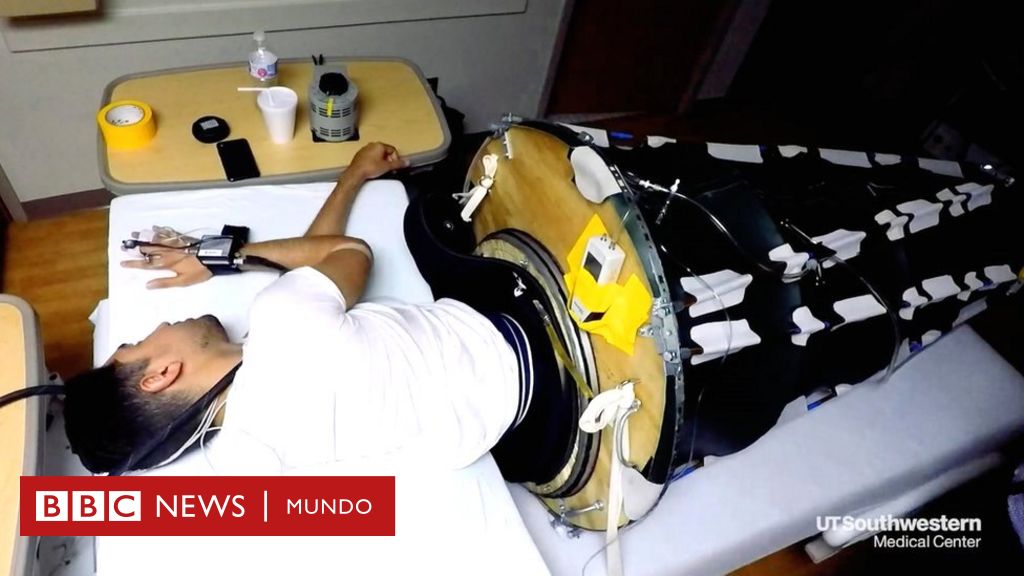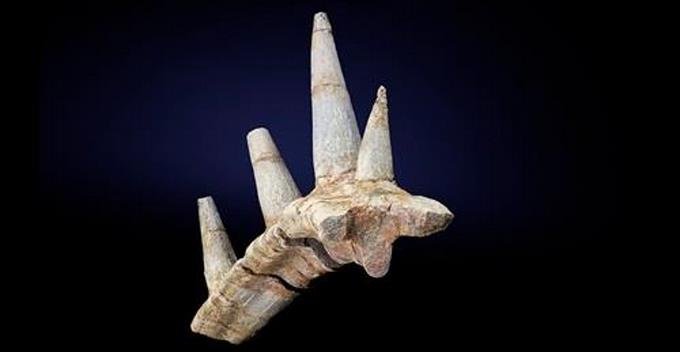- Draft
- BBC News World
Space sacks allow fluids to move towards the feet without staying on the head.
Scientists have developed a high-tech sleeping bag to prevent vision problems experienced by some astronauts living in space.
At zero gravity, fluids float to the head, crushing the eyelids over time.
This is one of the most dangerous problems for astronauts, and some experts are worried that it could compromise missions to Mars.
In sacks a Head-to-toe fluid absorption technology.
The person responsible for its development Benjamin Levine, Professor of Indigenous Medicine at the University of Texas Southwestern Medical Center, and seeker of the device at the International Space Station (ISS).
NASA has documented the vision problems of more than half of the astronauts working on the ISS. Some were far-sighted and had difficulty learning, and sometimes needed the support of other members of the same team to complete the experimental tasks.
“We do not know how severe the effects of a long flight like two years of Mars surgery will be,” said Professor Levine, who is also the director of the Institute for Environmental and Exercise Medicine, a program of southwestern medicine. Center in conjunction with Texas Health Presbyterian Hospital in Dallas.
Image source, David Grasham
Scientist Benjamin Levine, creator of space sacks.
“If the astronauts have a severe disability that makes it impossible for them to see what they are doing, it will be a huge disaster and it will compromise the mission,” he added.
In 2005, astronaut John Phillips flew himself to the ISS with a 20/20 vision and returned six months later with a 20/100 vision. Others experience a less severe version of the condition.
On Earth, when a person gets out of bed, gravity causes fluids to flow through the body, which is called “discharge”. In space, however, the low gravitational force allows almost two liters of body fluid to accumulate in the head, which puts pressure on the eye.
Conditions in space can cause a disease called Spaceflight-Associated Neuro-Ocular Syndrome (SANS), which causes progressive flatulence in the back of the eye, inflammation of the optic nerve, and visual impairment.
How does a sleeping bag work?
Although the brain pressure of a person lying on the ground is slightly higher than that of someone in space, it softens when they stand up, which never happens to astronauts at zero gravity.
The sleeping bag, developed in conjunction with REI, an external gear manufacturer, fits around a person’s waist and encloses the lower body in a rigid frame.
Image source, NASA
Astronaut Serena Onion looks into the International Space Station with her eyes.
A suction device works on the same principle as a vacuum cleaner, creating a pressure difference that draws fluid towards the feet. This prevents it from building up in the brain and creates harmful pressure on the eye.
Before making regular use of this new technology, it is necessary to explore the time that astronauts should spend with their sleeping bag.
“Should everyone do this or are they at risk of developing SANS? Should they do it as soon as they go into space or can they just wait and see if their vision changes?” Dr. Levine asked. .
Despite these questions, the scientist was optimistic that SANS would not be dangerous to health when NASA embarks on its journey to Mars.
How did they test the technology?
Twelve cancer survivors helped to clarify the causes of this condition. The volunteers who took part in the study had ports on their heads to receive chemotherapy and allowed the experts to measure their brain pressure while flying in parabolic missions that simulated zero gravitational force for several seconds.
In this way, the scientists took measurements lying down with or without a sleeping bag. After lying down for three days, the researchers found that there was pressure to slightly change the shape of the eyelid, but no such change occurred when using the suction technique.
Sock technology also helps to improve the condition of atrial fibrillation caused by microgravity, which causes the heart to contract in space, thus beating irregularly.
The work has been reviewed by the press Jama Ophthalmology.
Now you can get notifications from BBC News Mundo. Download the latest version of our apps and activate them so you don’t miss out on our great content.





